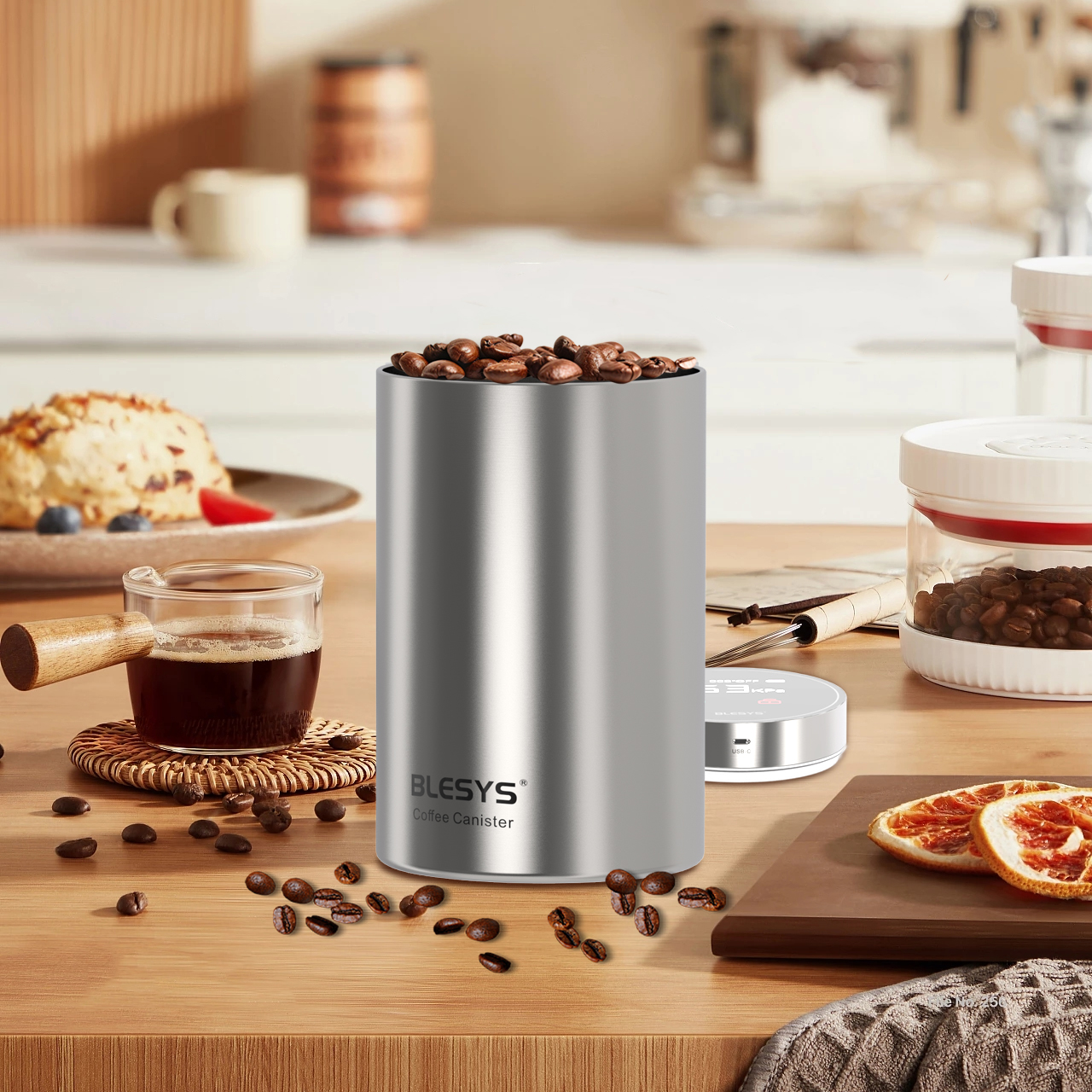Your cart is currently empty!

How to Choose the Perfect Coffee Beans Storage Container for Freshness
Selecting the right coffee beans storage container is essential for preserving the freshness, aroma, and flavor of your beans. Coffee enthusiasts know that improper storage can lead to stale, flat-tasting brews—no matter how high-quality your beans are. While grinders and brewing gear steal the spotlight, a well-designed coffee beans storage container is the unsung hero of your coffee routine. Let’s explore how to pick one that combines functionality, durability, and SEO-friendly practicality.
1. Material Choices for Your Coffee Beans Storage Container
The material of your coffee beans storage container directly impacts its ability to block light, air, and moisture—the three main culprits of coffee degradation. Here’s a breakdown:
- Airtight Stainless Steel: The gold standard for coffee beans storage containers. Durable, 100% lightproof, and often equipped with vacuum seals.
- UV-Blocking Glass: Opt for tinted or opaque glass containers. While elegant, clear glass exposes beans to light, accelerating flavor loss.
- Ceramic with Silicone Seals: Stylish but often lacks airtightness. Pair with a quality inner liner for better protection.
- Food-Grade Plastic: Affordable and lightweight, but ensure it’s BPA-free and odor-resistant. Avoid thin plastics that degrade over time.
2. Airtight Seals: The Heart of a Coffee Beans Storage Container
An airtight seal is non-negotiable. Oxygen is coffee’s worst enemy, breaking down volatile oils within days. When evaluating a coffee beans storage container’s seal:
- Look for silicone gaskets or rubber rings—they create a tighter closure than basic plastic lids.
- Test the lid: Press down firmly. If it clicks into place and doesn’t wobble, you’ve found a winner.
- Avoid “coffee canisters” with loose-fitting lids—they’re often marketing gimmicks with poor functionality.
Pro Tip: A true vacuum-sealed coffee beans storage container will release a hiss when opened, indicating minimal oxygen exposure.
3. Size and Design: Matching Your Coffee Beans Storage Container to Your Needs
- Capacity: Choose a container that holds a 7–14 day supply. Larger containers trap excess air as beans deplete, speeding up oxidation.
- Shape: Wide-mouth designs simplify scooping, while narrow-neck containers minimize air contact after each use.
- Space-Saving: Ensure your coffee beans storage container fits in cabinets or pantries. Bulky containers waste valuable kitchen real estate.
4. Extra Features: Do They Enhance Your Coffee Beans Storage Container?
- CO2 One-Way Valves: Useful for freshly roasted beans emitting gas, but prioritize airtightness over valves for long-term storage.
- Built-In Date Trackers: Convenient for tracking roast dates, though removable labels work equally well.
- Modular Stackability: Ideal for multiple containers, especially if you store different coffee varieties.
5. Budget-Friendly vs. Premium Coffee Beans Storage Containers
- Under $20: Focus on basics—stainless steel or tinted glass with silicone seals. Example: OXO Pop Container.
- 20–20–50: Invest in brands like Fellow Atmos, which use vacuum-seal technology to extend freshness.
- Luxury Tier: Copper-lined or designer containers look chic but prioritize proven functionality over aesthetics.
Final Tip: Pair Your Coffee Beans Storage Container with Smart Habits
Even the best coffee beans storage container can’t compensate for poor practices. Always:
- Buy whole beans in small batches (enough for 2 weeks).
- Grind beans just before brewing.
- Store the container away from heat, light, and humidity (e.g., not near the stove or window).
Leave a Reply